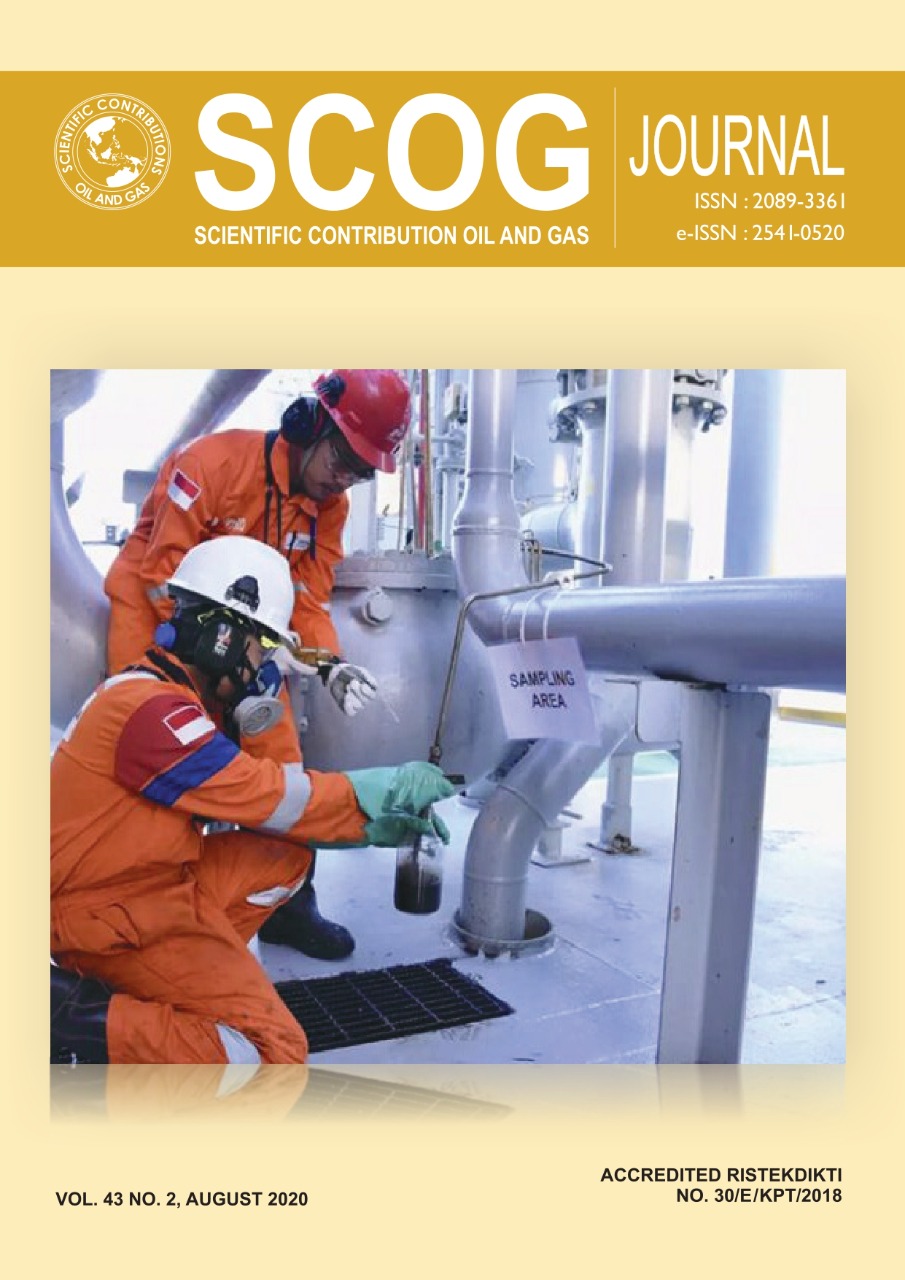Appication of ZO-CRS Stack on Residual PP Removal of PS Component in Converted-Wave Sesimic Reflection Processing
DOI:
https://doi.org/10.29017/SCOG.43.2.520Abstract
A high-quality image of the PS component is needed since applying the converted-wave seismic method has increased significantly in hydrocarbon exploration, especially in interpreting the detail and complexity of structure or reservoir zones. The incident P-wave on a surface produces a reflected and converted P-S wave. Converted-wave seismic uses the multicomponent receiver that records both vertical and horizontal components. The vertical component is assumed to correspond to the compressional PP wave, and the horizontal corresponds to the PS converted-wave. To better understand how to image better the PS component, synthetic seismic data with the shallow gas and relatively complex model are constructed by the full-waveform modeling. This study aims to improve the imaging quality in the PS section to remove the residual PP events on the horizontal data refer to our previous study. In this study, to obtain the more reliable PS data, the residual PP reflections have been removed by applying the Zero Offset Common Reflection Surface (ZO CRS) Stack of the PS component. The results of this study, the imaging quality is better than that in the previous study.References
Barkved, O. et al., 2004. The Many Facets of Multicomponent Seismic Data: Oil Review. pp. 24-56.
Bortfeld, R., 1989. Geometrical ray theory: Rays and travel times in seismic systems (second-order. Geophysics, 54(3), pp. 342-349.
Cary, P., 2001. Multicomponent seismic exploration in Canada - one person’s perspective. CSEG Recorder, pp. 62-67.
Danbom, S. H. & Domenico, S. N., 1986. Geophysical Developments Series. Shear-wave exploration. Tulsa, OK USA: Society of Exploration Geophysicists.
Garotta, R., 1999. Shear waves from acquisition to Interpretation. Distinguished Instructor Series• No. 3. Tulsa, OK USA: Society of Exploration Geophysics.
Guevara, S. E., 2000. Analysis and filtering of near-surface effects in land multicomponent seismic data, Calgary: University of Calgary.
Hardage, B. A., De Angelo, M. V., Murray, P. E. & Sava, D., 2011. Multicomponent seismic technology. Tulsa: Society of Exploration Geophysicists.
Hertweck, T., Schleicher, J. & Mann, J., 2007. Data Stacking Beyond CMP. The Leading Edge, 26(7), pp. 818-827.
Hubral, P., 1983. Computing true amplitude reflections in a laterally inhomogeneous earth. Geophysics, 45(8), pp. 1051-1062.
Jäger, R., Mann, J., Höcht, G. & Hubral, P., 2001. Common reflection Surface Stack: Image and attributes. Geophysics, 66(1), pp. 97-109.
Landa, E., Keydar, S. & Moser, T. J., 2010. Multifocusing revisited – inhomogeneous media and curved interfaces. Geophysical Prospecting, 58(6), pp. 925 - 938.
Mann, J. et al., 1999. Common-reflection- surface stack a real data. Journal of Applied Geophysics, 42(3-4), pp. 301-318.
Stewart, R. R. & Lawton, D. C., 1996. P-S Seismic Exploration: A mid term overview. CREWES Research Report, Volume 8, pp. 1-34.
Sun, J. & Innanen, K., 2014. A review of converted wave AVO analysis.. CREWES Research Report, Volume 26, pp. 1-13.
Thomsen, L. et al., 1997. Converted Wave Imaging of Valhall Reservoir. Europe, European Association of Geoscientists & Engineers.
Triyoso, W., Oktariena, M., Sinaga, E. & Syaifuddin, F., 2017. Full waveform modelling for subsurface characterization with converted-wave seismic reflection. Bali, Southeast Asian Conference on Geophysics.
Viony, N. C. & Triyoso, W., 2018. Full waveform modelling for subsurface characterization with converted-wave seismic reflection: residual PP removal on PS component using f-k filter. Bali, IOP Publishing Ltd.
Viony, N. C. & Triyoso, W., 2018. Study of converted-wave modelling: AVO application for shallow gas models. Jurnal Geofisika, 16(2), pp. 19-24.
Downloads
Published
Issue
Section
License
Copyright (c) 2020 SCIENTIFIC CONTRIBUTIONS OIL AND GAS (SCOG)

This work is licensed under a Creative Commons Attribution 4.0 International License.
Authors are free to Share — copy and redistribute the material in any medium or format for any purpose, even commercially Adapt — remix, transform, and build upon the material for any purpose, even commercially.
The licensor cannot revoke these freedoms as long as you follow the license terms, under the following terms Attribution — You must give appropriate credit , provide a link to the license, and indicate if changes were made . You may do so in any reasonable manner, but not in any way that suggests the licensor endorses you or your use.
No additional restrictions — You may not apply legal terms or technological measures that legally restrict others from doing anything the license permits.














